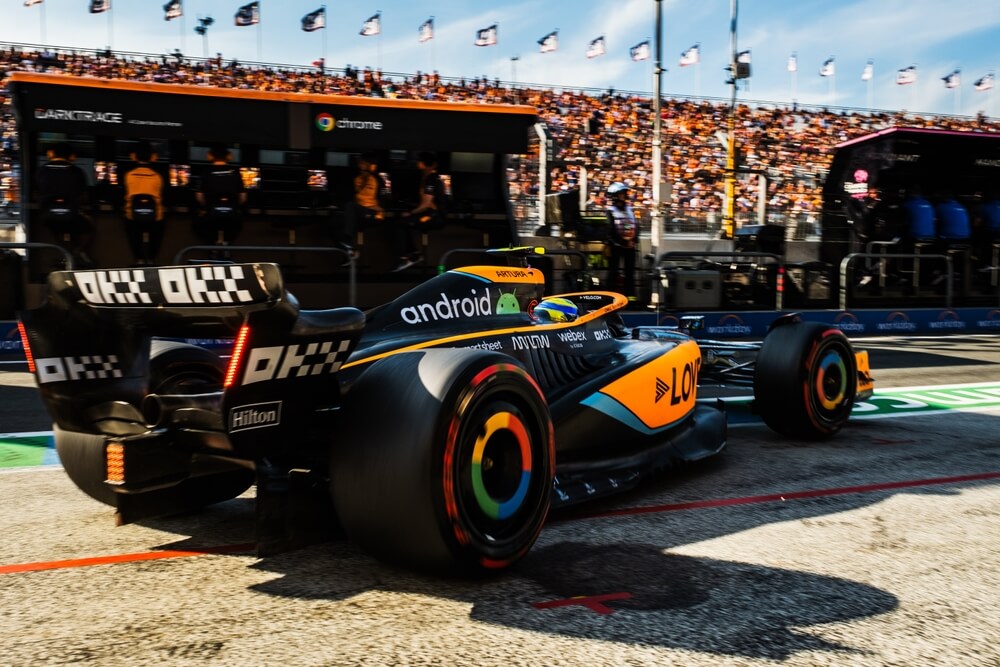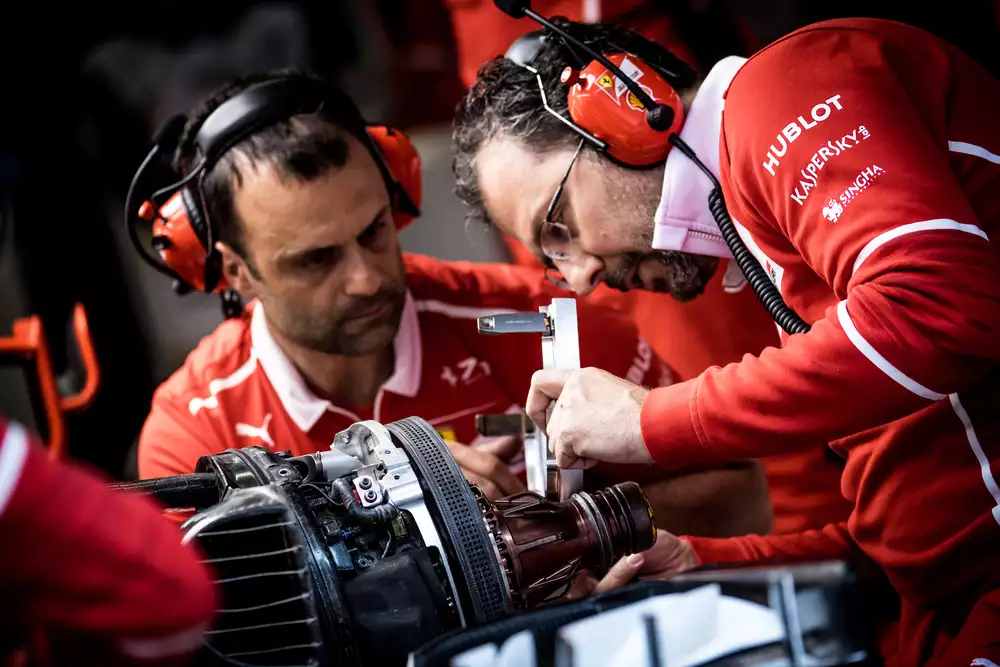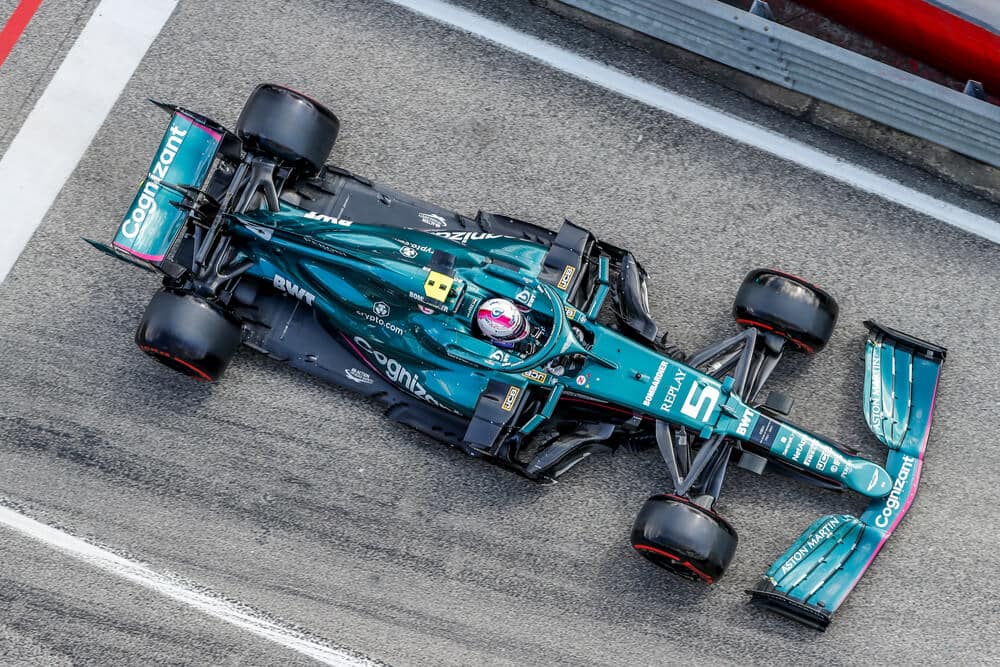Ever wondered how much Formula One teams get paid? The sport of Formula One racing has become an increasingly lucrative business. However, it’s not just the drivers who are making a hefty profit – teams can also make a significant sum from taking part in F1 events.
In this article, we’ll take a look at how much formula one teams get paid. We’ll look at the different sources of income available to teams and how much they can make from each.
Table of Contents
Watch this video to learn more about how F1 teams get paid.
How Much Do F1 Teams Get Paid?
A popular saying in motorsport circles is that “it takes money to make money”; however, that may no longer be the case for Formula 1 teams.
In 2021 a budget cap were introduced. All teams have to abide by a set of rules that limit their spending on cars or personnel. The budget cap for 2023 is currently set at $135 million. It’s with a three-year gradual decrease from the 2021 budget of $145 million.
Now compared to the past, this new budget cap means that the profits and income of Formula 1 teams will now look quite high.
The income of a Formula 1 team is made up of three main sources: race prize money, sponsorship and advertising and TV rights and broadcasting. Let’s take a look at each in detail.
Prize Money
One of the most common sources of revenue for Formula 1 squads is race prize money. Teams earn based on criteria like their performance in the Constructors’ Championship, points earned by their drivers, and pole positions and fastest laps achieved.
The distribution of prize money among teams
The distribution of prize money among Formula 1 teams is a key factor in determining how much they can make. Every year, the FIA distributes a considerable sum of money over $900 million. They distribute it to those teams that qualify for and compete in the F1 World Championship.
This money is generated from sources such as television rights and race fees. It is allocated to the teams in several installments throughout the season. The largest portion of prize money is paid out after the end of competition. This system allows teams that are experiencing financial difficulties to receive help earlier on and gives them an incentive to perform better as the season progresses.
The impact of a team’s performance on their prize money earnings
The total amount of money that a team receives is largely dependent on their performance throughout the year. Generally, the team which finishes first in the Constructors’ Championship earns significantly more than those teams who place lower.
For instance, in the 2020 season, Mercedes, who became the Constructors’ champion, earned $135 million while Aston Martin earned $60 million-just over half of what Mercedes had earned.
However, there’s another side of the picture which has nothing to do with the performance-based prize money. For example, Ferrari was given an extra bonus of $68 million in 2020 just for agreeing to remain part of Formula 1. This is due to their significant history and prominence in the sport.
The role of the Formula One Group in distributing prize money
The Formula One Group, which is owned by Liberty Media, plays a key role in the distribution of prize money among teams. They are responsible for negotiating with each team and deciding on who receives what amount.
The Formula One Group also plays a major role in deciding the prize money amounts for smaller teams. It is their job to ensure that these teams are given enough funds to remain competitive and attractive to sponsors and viewers alike.

Sponsorship and Advertising
With the rise in popularity of Formula 1 across the world, teams have been able to attract more sponsors and advertisers in recent years. This has led to a rise in income for many F1 squads as sponsors are willing to pay large sums of money for exposure and visibility.
The role of sponsorship and advertising in Formula One team revenue
Sponsorship and advertising are two of the most important sources of income for Formula 1 teams. These funds provide teams with not just capital, but also brand recognition and customer loyalty among fans.
The amount of money that a team can earn from sponsorship and advertising depends on several factors. Such as their performance in races, the number of sponsors they have, and their ability to attract potential sponsors. On average, teams have been known to have 15-20 sponsors.
The impact of a team’s performance and popularity on their sponsorship earnings
It’s obvious that teams who perform well and are more popular have an advantage when it comes to securing sponsorships. Team performance is a key factor in determining whether or not a sponsor will be willing to invest in the team. Easily explained since companies want to be associated with success and maximum exposure for their brand.
Take Red Bull for example, who have signed a title partnership with Oracle worth $300 million in total. This is testament to the fact that success directly affects team sponsorships, as Oracle has invested heavily in Red Bull’s success and brand visibility.
Similarly, Mercedes’ sponsorship deal with Petronas which was originally valued at US$42 million a year also speaks volumes on the impact of performance and popularity on sponsorship deals.
Apart from the title sponsors, teams also attract sponsorships from smaller companies and individual drivers.
The value of a team’s brand and how it affects sponsorship deals
As we have seen, team performance and popularity are integral in attracting sponsorships. However, the value of a team’s brand also plays an important role in this process.
As we have seen, team performance and popularity are integral in attracting sponsorships. However, the value of a team’s brand also plays an important role in this process.
The commercial value of a team is determined by the level of exposure it receives, its track record in terms of success, and its ability to remain competitive. This helps sponsors decide whether or not to invest in the brand.
For example, Mercedes has been able to attract a number of sponsors due to their impressive record over the years and their ability to remain competitive in the sport.
Read our article: How much do F1 Sponsors and Partners Pay F1? to learn more.
TV Rights and Broadcasting
TV rights and broadcasting play an important role in generating funds for Formula 1 teams. According to the latest figures, the 2022 season averaged 1.21 million viewers per race across ESPN, ESPN2 and ABC, up 28 percent from the 2021 record of 949,000 average viewers.
This is proof that Formula 1 racing remains popular with fans worldwide. This in turn can help teams to generate more sponsorship and advertising revenue through TV rights and broadcasting.
The role of TV rights and broadcasting in Formula One team revenue
TV rights and broadcasting are an important source of income for Formula 1 teams. A large part of F1 revenue comes from broadcasting rights, which is divided up among the teams based on their performance in races. The more successful a team is, the more television money it will receive.
The sum of $36 million which is paid to every team participating in the F1 championship is largely made up of TV rights money. It sure is an important source of income for teams.
The impact of a team’s performance and popularity on their TV rights earnings
The performance of a team can have an impact on the amount of TV rights money they receive. Teams who are performing well in races will be more likely to attract more viewers. The more viewers the team attract – the higher broadcasting revenues.
Additionally, the more fanbase a team has, the more likely it is to get higher TV rights money. Teams such as Ferrari, Mercedes and Red Bull have been able to command higher fees due to their popularity in the sport. In 2020, Mercedes earned almost 20% of all TV coverage in the 2021 season due to their impressive performance.
The role of the Formula One Group in negotiating and distributing TV rights revenue
The Formula One Group plays an important role in negotiating and distributing TV rights revenue. It is responsible for setting the terms of broadcast contracts with different networks and then distributing the money among teams according to their performance and popularity.
This helps ensure that each team receives a fair share of the revenue from television broadcasting.
It was through Formula One group Liberty Media’s initiatives, such as the Netflix series Drive to Survive, that helped get more people watching the races and consequently generate money from selling TV rights around the world.
Frequently asked questions
How is prize money distributed among Formula One teams?
How does a team's performance affect their revenue from sponsorship and advertising?
How does a team's performance and popularity affect their revenue from TV rights and broadcasting?
Conclusion
So, it is clear that Formula One teams can generate a significant amount of revenue from prize money, sponsorship and advertising, and TV rights and broadcasting. The level of income can vary depending on the team’s performance and popularity, with more successful and popular teams able to command higher fees. The Formula One Group plays an important role in negotiating TV rights deals and distributing prize money, which can have a major influence on a team’s overall earnings.
Article sources
Learn more about Formula One
Want to learn more about F1? Then visit our Formula 1 glossary and dictionary.



